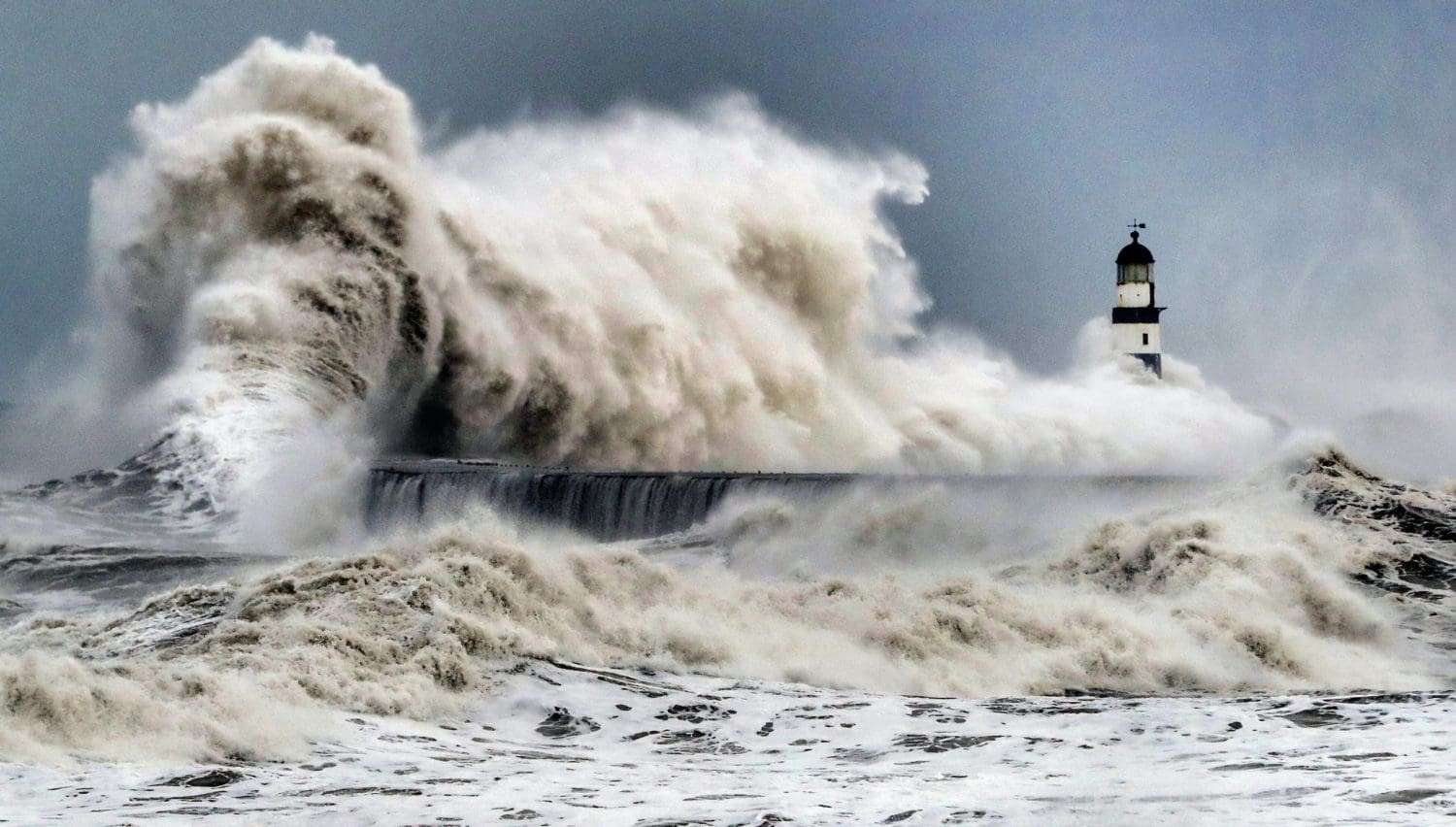It's that time of year again: students and their families are busy preparing for the start of school, while some of us are gearing up to step in front of the classroom. While preparing to teach an intro course on climate, I'm reminded of why we use the term climate change and not global warming.
Yes, the Earth is warming from a thickening layer of greenhouse gases in the atmosphere caused by us. But climate changes range from sea level rise to increasing storms, floods, fires, and drought, which are all negatively impacting biodiversity as well. So, not just warming. Recent storms that battered the eastern U.S. coast and Bermuda remind us of this difference. While some communities face extreme heat, others brace for storms and rising waters, and many face multiple impacts.
Elevating flood protection was perhaps the first way landscape architects began designing climate change solutions. Many have been working on flood management for their entire career. I first engaged in this work at the U.S. Army Corps of Engineers some 20 years ago. Over the past decade, my focus shifted to coastal adaptation projects, like the San Francisco Waterfront Resilience Program, Depave Park, and Treasure Island. They taught me that designing for unprecedented storms and rising seas requires a new tool bag, belt, and a whole new set of tools.
Much of our work as landscape architects focuses on designing adaptations. When designing with nature, we can create adaptations that reduce emissions and costs and increase benefits for ecosystems and communities. We've also learned new ways to engage community members and support them in gaining resources for self-determination when facing these risks.
Designing for Rising Waters
For the Rebuild by Design competition in the tri-state area, which was a response to Superstorm Sandy, the landscape architecture firm SCAPE developed the clever living breakwater technique. It's an offshore approach that reduces the impact of intense waves on communities during coastal storms while benefiting ecosystems. Pushing beyond just flood protection, it transforms a typical breakwater approach into an aquatic environment supportive of marine life, including oysters. It also serves as a habitat and refuge for larger species.
In addition to designing this physical and non-traditional infrastructure, SCAPE spent countless hours documenting their approach and negotiating with governments at all levels to get their idea approved. This form of advocacy takes devotion but is required to innovate in this challenging and changing climate.
Engaging Communities
In San Francisco, a city renowned for its inclusion and celebration of diverse voices, the commitment to openness can sometimes result in lengthy processes and, occasionally, lead to inaction. The team at landscape architecture firm CMG – Kevin Conger, FASLA, in particular – realized that a new model of participatory design was needed to rise to the challenge of increasing coastal flooding.
Rise-Up is a community engagement process that was first piloted in Southern Marin County and then evolved as other projects continued through our work at Crissy Field in San Francisco and with the Port of San Francisco Waterfront Resilience Program.
The Rise-Up model includes three main steps:
-
Sharing scientific knowledge in an accessible way to the community
-
Gathering responses through the hands-on engagement activity called “Game of Floods” where participants use risk maps to come up with adaptation alternatives
-
Community presentations of their ideas, which ultimately move forward in the design and planning process
The role of the landscape architect is shifting to become both facilitator and listener. This enables us to support more community self-determination. Plans and designs can be rooted in community ideas, which they can fully champion.
One way to complement in-person or online activities is to engage communities where they are. FloMo was developed by landscape architecture firm Bionic for the Resilient by Design Competition: Bay Area Challenge. It engages communities impacted by flooding.
By transporting knowledge and resources via the FloMo van, backyard interactive learning happens at the homes of those most impacted by sea level rise. This approach creates a memorable and informative encounter that prepares those in need for the tough decisions ahead.
Enabling Underserved Communities
The harsh reality is that adaptation will not happen without funding. For historically marginalized, underserved, and under-represented communities, this is a devastating but familiar circumstance.
Landscape architects at Design Jones, LLC offer a model through their work in the Gentilly Neighborhood of New Orleans. Following Hurricane Katrina, they identified ways to prevent future hydraulic system failures. Their insights raised awareness that adaptations need to happen within inland communities, not just along the coast, to safeguard against future flooding.
Forming the first resilience district in New Orleans, the city and redevelopment authority prioritized a new Community Adaptation Program with $141 million from the U.S. Department of Housing and Urban Development. This program distributes funds directly to homeowners, supporting the design and construction of green infrastructure in their own backyards. This reduces stormwater from entering the surrounding urban waterways, which will continue to experience more intense storms.
Going Global
While these initiatives may not be new, they are steadily becoming more mainstream. One outcome of the UN Global Stocktake in 2023 is that all countries will be developing National Adaptation Plans (NAPs) by 2025 and are required to show significant implementation progress by 2030.
We can contribute lessons learned from our work in this space. By sharing this knowledge, we can help many countries without landscape architects or in-country technical expertise and those that are just beginning to develop their NAPs.
To support this, I am developing Supplementary Material to the UN NAP Technical Guidelines, which will be shared as a resource at COP29 and is the product of my ASLA Biodiversity and Climate Fellowship this year. During the conference, Kotchakorn Voraakhom, Intl. ASLA, and I will be workshopping these strategies with country leaders helping to develop implementation roadmaps with a goal of overcoming unique regional challenges.
More Support Needed
There is positive momentum to implement more nature-based adaptations, but we need support to change the business-as-usual mindset. The U.S. federal government has lifted up nature-based solutions. Community-based education programs like the Envision Resilience Challenge are becoming more common. And there are resources like Landscape Architecture for Sea Level Rise being published. We are making progress.
But when students from other schools still come up to me to say, “I wish I was learning more about climate change,” it means we have a ways to go. Nature-based solutions are documented to be approximately 70% more cost effective than gray infrastructure. However, most nature-based climate adaptation is not funded despite the fact that 800 million people will be affected by coastal flooding by 2050.
More studies and research to prove the effectiveness of these solutions and more built projects will get us there. But we will all need to do our part.
Nature: A Powerful Force For Coastal Resilience
Almost three-quarters of the world’s population live within 50 kilometres of a coastline, but these areas are becoming increasingly at risk from the effects of climate change. [1] Only 15% of the world’s coastal areas are ecologically intact – and by 2050, 800 million people will live in cities where sea levels could rise by more than half a metre. [2]
To make these cities truly resilient to floods, storms, and sea level rise we need to think beyond traditional ‘hard’, grey infrastructure solutions like sea walls and dykes. and work with nature rather than against it. Designers, planners, and governments must integrate nature-based solutions into traditional defences for coastal cities to protect their communities.
When we think of dangers coastal cities face, we can’t afford to use any less than all the tools at our disposal. That means using sustainable grey infrastructure but also using green nature-based infrastructure where we can. Nothing is a silver bullet, but if we have the opportunity to restore the functions of natural coastal systems like dunes, wetlands and mangroves, we should. Nature-based solutions reduce environmental damage. And importantly, they actively enhance the natural environment by restoring ecosystems, reversing biodiversity loss, and improving water quality.
One example is the development of Hunter’s Point South in New York City, a once abandoned industrial area that was heavily damaged by Hurricane Sandy. It’s now home to a newly constructed wetland designed to absorb coastal flooding. It includes bioswales, streetside stormwater planters, porous pavements, and a stormwater wetland. With exclusively native species selected to thrive in the marine environment, and networks of pipes under seemingly ordinary lawns, these solutions add to the park’s ability to absorb heavy rainfall, helping to fight against the risk of rising sea levels and increasingly severe storms.
Mangroves and coastal wetlands capture and store carbon at a rate ten times greater than mature tropical forests. [3] Restoring these environments not only increases resilience to climate change, but helps to fight climate change’s root cause. For instance, a single community-based mangrove restoration project in Mikoko Pamoja, Kenya, conserves 2,500 tonnes of carbon a year from avoided degradation and new planting.
This process of restoration can also have a transformative impact on local communities. As well as being better protected against climate change, residents enjoy improved availability of clean water, food security and aquaculture opportunities. And while the initial investment might be less than for traditional infrastructure projects, relatively high maintenance costs create long term opportunities for local employment.
We will only be able to make the most of nature-based solutions by taking a long term, collaborative approach, and by integrating them well with sustainable and existing grey infrastructure.
Nature-based solutions are often less well understood, so it’s essential to keep local communities and wider stakeholders on side through education and by getting them involved in design, operations, and maintenance. Only by understanding the full extent of the benefits of nature-based solutions will communities and decision-makers be prepared to take the required long-term view.
Digital tools can prove invaluable both in measuring the risks of coastal erosion and flooding, and the impact of different solutions to build resilience. Tools such as Arup’s NatureInsight can help planners deploy nature-based solutions as effectively as possible, by identifying the appropriate placement for interventions and offering insights into the costs and benefits of implementing them.
It’s clear that the benefits of nature-based solutions are too significant to ignore; by fully embracing them we can build coastal resilience while regenerating local landscapes and communities. As extreme weather events caused by climate change become more frequent and severe, it’s more important than ever that we act now to protect coastal communities, and we need to do so by working with, not against nature.

















